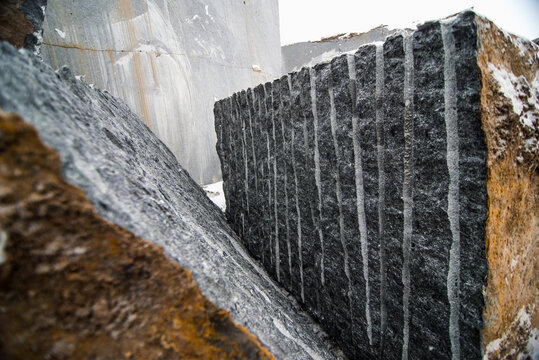Checking Out Granite Quarries in South Africa Industry: From Quarry to Masterpiece
Checking Out Granite Quarries in South Africa Industry: From Quarry to Masterpiece
Blog Article
Discovering the Rich History and Sustainable Practices of Granite Quarrying
As we depend on the precipice of revealing the detailed tapestry of granite quarrying, a journey through time exposes not simply the physical act of removing rock however also the social and historical importance woven right into the very fabric of this method. From the old beginnings that laid the structure for modern quarrying techniques to the sustainable practices that are shaping the future of this industry, each sculpt mark on granite surface areas informs a story waiting to be unearthed (granite quarries in south africa). The heritage of granite quarrying extends far beyond plain extraction; it is a testament to human resourcefulness, resilience, and the enduring allure of this impressive stone
Ancient Origins of Granite Quarrying
Dating back to old people, the technique of quarrying granite has been an indispensable component of human background and architectural innovation. The earliest evidence of granite quarrying dates back to old Egypt, where huge pyramids and elaborate sculptures were crafted from this long lasting rock. The Egyptians used primitive tools to remove granite blocks from quarries, showcasing the relevance of this material in their significant building and constructions.
Moving on in background, the Greeks also made considerable contributions to the quarrying of granite. The Greeks utilized granite in various architectural wonders, such as holy places and statues, showing their ability in shaping and carving this sturdy stone. The Romans even more fine-tuned the techniques of quarrying granite, utilizing advanced tools like knives and hammers to essence and form granite for their famous frameworks.
With the centuries, the method of quarrying granite has evolved, with modern-day innovations improving performance while preserving the timeless appeal of this natural rock - granite quarries in south africa. From ancient civilizations to modern home builders, the legacy of granite quarrying continues to shape our world
Evolution of Quarrying Methods
The advancement of quarrying techniques has actually been noted by a continual development in the direction of better efficiency and precision in extracting granite. From the basic techniques utilized by our ancestors to the advanced technologies used in modern quarrying procedures, the market has gone through considerable developments. Early quarrying techniques entailed manual work with standard devices such as chisels, hammers, and wedges to extract granite blocks from the planet. As people advanced, techniques like fire-setting and primitive explosives were presented to assist in the extraction process.
In even more current times, the arrival of machinery changed the quarrying market, making it possible for faster extraction prices and increased efficiency. Technologies such as ruby cord saws, high-pressure water jets, and pneumatically-driven drills have actually come to be standard in modern quarries, enabling accurate cutting and minimized waste. Improvements in computer-controlled tools and view 3D modeling have actually optimized quarrying operations, leading to very little ecological impact and improved sustainability practices. As the need for granite proceeds to increase, the evolution of quarrying methods remains important to meeting market requires effectively and sustainably.
Cultural Importance of Granite
Granite holds a profound social importance across different human beings as a result of its long-lasting presence in architectural work of arts and revered monuments. From the marvelous pyramids of Egypt to the detailed carvings of the Angkor Wat temple in Cambodia, granite has been a product of selection for sharing splendour and long life in social heritage. In old Rome, granite columns decorated temples and public structures, signifying strength and durability. The social relevance of granite expands past its physical characteristics; it embodies durability, security, and timelessness, making it a sign of enduring traditions and practices.

Lasting Practices in Quarrying
In the middle of the abundant background of granite quarrying and its cultural value lies an expanding focus on sustainable practices within the sector. As ecological awareness and problems regarding source deficiency have heightened globally, the quarrying field has actually progressively welcomed sustainable techniques to minimize its influence on the environment and surrounding communities.

In addition, reclamation and recovery of quarry websites post-extraction are essential to lasting methods. By restoring quarried locations to a natural or helpful state, such as developing wild animals habitats or leisure areas, quarriers can offset the environmental impact of their operations and contribute positively to the regional ecological community.
Tradition of Granite Quarrying
With a historic backdrop steeped in craftsmanship and industrial progress, what sustaining effect has granite quarrying left on the landscape of modern-day culture? The legacy of granite quarrying transcends mere removal methods; it has formed building wonders, city landscapes, and cultural heritage worldwide. The resilient nature of granite has made it a recommended option for monoliths, buildings, and infrastructure, standing as a testimony to the skill and creativity of quarry workers throughout generations.
Moreover, the economic impact of granite quarrying can not be neglected. The market proceeds to offer employment possibilities and drive local economies in regions where granite removal prevails. It has additionally spurred technical developments in quarrying techniques and tools, causing more reliable and sustainable methods.
In regards to sustainability, the tradition of granite quarrying consists of initiatives to alleviate environmental impacts through recovery projects and liable source administration. By stabilizing financial interests with ecological stewardship, the i thought about this industry aims to guarantee that future generations can continue to take advantage of this enduring natural deposit.
Conclusion

Report this page